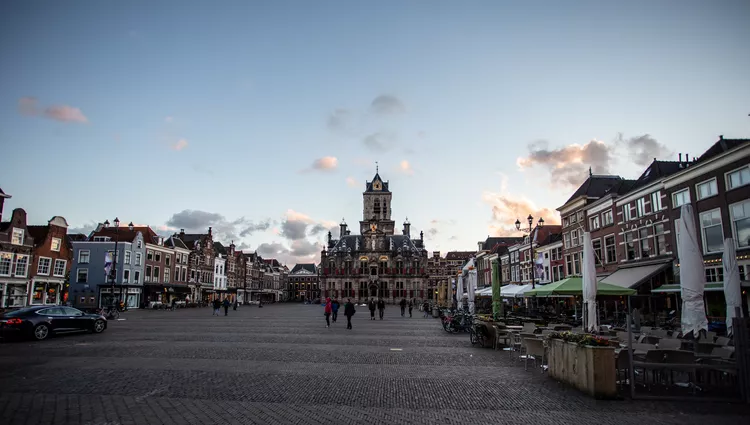Summary of Delft Travel Guide
Delft, just an hour by train from Amsterdam, is a city that positively exudes old Dutch charm. Synonymous with the “Delft Blue” porcelain that’s beloved worldwide, Delft also boasts painter Jan Vermeer as its native son, as well as some of The Netherlands’ most iconic places: from the spacious square in the shadow of the Nieuwe Kerk (New Church) to the five majestic spires of the Oude Kerk (Old Church).
How to Get There
- By train – Two direct trains per hour connect Amsterdam and Delft; the trip takes approximately one hour. For more information, visit the Dutch Railways website.
What to See
- Visit Delft’s quintessential attractions, the Nieuwe Kerk and Oude Kerk. These two splendid churches house the remains of some of the Netherlands’ most celebrated citizens. The Nieuwe Kerk, located on the northern perimeter of Delft’s lovely main square (simply called “de Markt,” or market), is a 15th-century Gothic landmark. It serves as the burial place for members of the Dutch Royal House, including the national hero William the Silent. The nearby Oude Kerk, which predates the Nieuwe Kerk by two centuries, is the final resting place of Jan Vermeer, the Dutch Baroque painter and one of the most celebrated 17th-century masters.
- Witness the production of Delft Blue porcelain at Royal Delft, the oldest existing “Delftware” factory. Dutch potters adopted the blue and white motifs of Chinese porcelain in the early 17th century and soon personalized them with native Dutch icons like tulips and windmills. Observe exquisite vases, plates, and tiles at the open factory, and gain insight into their intricate manufacture.
- Discover your inner history buff at Museum Het Prinsenhof, which chronicles the story of the Dutch Republic. Housed in a converted 15th-century convent, the tranquil courtyard enchants visitors with meticulously manicured shrubbery that winds around a monumental statue of William the Silent. Inside, learn about this “Father of the Fatherland” and the Dutch Republic’s 17th-century heyday.
- After the distiller Lambert van Meerten went bankrupt in the early 20th century, his friends realized his vision of creating a public space for his collection. These fine and decorative arts are still displayed for public enjoyment at the Museum Lambert van Meerten, showcasing everything from period furniture to priceless Dutch porcelain and tiles.
Dining Out
- Het Wapen van Delft (Markt 34) – This restaurant’s notable history includes a visit from President Bill Clinton and First Lady Hillary Clinton in 1997 when they dined on poffertjes, the Dutch version of silver-dollar pancakes. With a picturesque location on the market square and a menu featuring traditional Dutch pancakes, Het Wapen van Delft is an ideal spot to experience Dutch culture and cuisine.
- De Zeven Zonden – “The Seven Sins” provides a compact yet uniquely eclectic menu, featuring a few meat-free options, all at affordable prices, making it a tempting choice without the guilt.
- De Ruif – This student favorite serves up real comfort food in a relaxed atmosphere; their creatively named dishes blend Dutch, French, and Italian cuisine for a sophisticated yet unpretentious pan-European dining experience.
Delft Festivals and Events
- Delft Chamber Music Festival – Classical music enthusiasts flock to this annual festival, which spans several weeks each summer, bringing accomplished international musicians to the traditional venue, Museum het Prinsenhof.
- Delft Ceramica – This international ceramics exposition takes center stage in the market square each July. With around 60 stalls from both emerging and established artists, collectors mingle in search of their next acquisition while awaiting the announcement of the prestigious annual Delft Ceramica Award.




